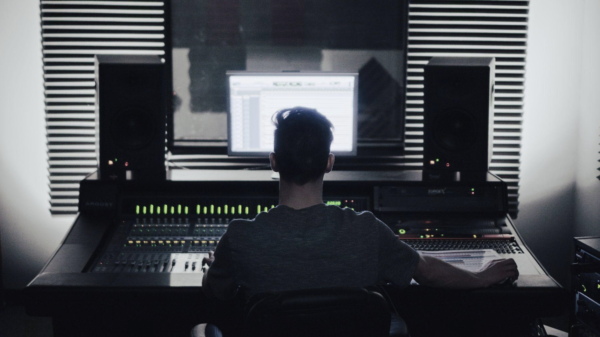You simply can’t get a party started today without a ready dose of New York hip-hop. The pithy candor of Ice Spice promises an intense, caption-rich anthem. Cash Cobain pushes boundaries with his progressive, nocturnal ballads, and Joey Bada$$ keeps a myriad of international die-hards rocking to his witticisms. Game, bravado, and lyricism get the woofers shaking in a New York minute. What’s to thank for this forever bash?
Imagine the coolest birthday party: a summer soiree that supplies a phenomenal gift. When the folks at 1520 Sedgewick Ave, in the Western stretches of the Bronx, spent their loose subway fare to party in the first-floor rec room, no one knew they’d kickstart a cultural makeover. Never-ending drum fills pounded from speakers as tall as Dr. J. while an afroed youngster (MC Coke La Rock) enchanted the room with a volley of sure-shot zingers. It’s August 11, 1973, and DJ Kool Herc channels the city’s nettled energy with a medley of sounds—funk, soul, and Latin bongos—doubled up for maximum groove via two turntables. It was a necessary assault on the senses birthed from dead-zoned blocks filled with disillusioned youth. The sound gave voice to that generation, which hustled from the bricks with a world-sopping hunger.
Grandmaster Caz, lead MC of the mighty Cold Crush Brothers, lived within walking distance from Sedgewick and couldn’t escape chatter about Herc’s innovative party. He got a rise from hearing breathless tales about grungy drums pulled from old records dominating the mood and couldn’t wait to add his agile lyrics and rhymes to the mix. From his black-and-white composition books to an unforgettable “Rapper’s Delight” verse, Caz brought timeless New York swagger to the forefront. The music met the wordsmith.
Trending Stories
One of New York hip-hop’s famous features in the Eighties were the scathing cadence honed in neighborhood battles where the competition was severe. Plus, the constant boom-bap of blaring ghetto blasters kept the youth on edge. The sounds—banged on various lunchroom tables in New York City high schools—made MCs revel in the dissident joy of being tough, smart-mouthed, and wordy in a town made for larger-than-life slick talkers. Before his galactic debut, Big Daddy Kane mastered his craft in a high school cafeteria, later graced by luminaries like Busta Rhymes. And on Follow the Leader, his infallible sophomore LP, Rakim kept heads nodding and speakers blowing, proclaiming that “competition is none.” In 1987, the famous battle between Bronx sovereign KRS-One and Queens scrapper MC Shan produced some of rap’s most unforgettable disses, anticipating today’s timeline-commanding beefs between Kendrick Lamar and Drake. New York not only proved that diss records can be straight-up bangers but also showed how cockiness and competitive drive can keep hip-hop both fun and reviving.
Editor’s picks
That spirit hasn’t always prevailed in the Rotten Apple—as the Nineties flourished, platinum singles seemed more beneficial than poignant verses, even as Biggie and Jay-Z became household names. Bad Boy Records pumped out hit after saccharine hit, making New York appear trite and overly materialistic. Still, classics by Gang Starr, Mobb Deep, and Wu kept soulful production and innovative lyrics at the forefront, restoring that vital, faithful appeal. The Diplomats revitalized New York in the early 2000s with emblematic mixtapes conveying their humorous Harlem quirks. And in the 2010s, A$AP Mob blessed the city with a burst of woozy geniality, showing that anyone could tap into their new Gotham mood. Recent Grammy recipients Rapsody and Doechii devoutly display their NY-influenced bona fides. Meanwhile, local icons Nas, Billy Woods, and Ghostface Killah continue dropping heat, securing the Big Apple as an undeniable hot spot. Approximately 50 years in, amidst the concrete slabs and tenements, it feels like only the sky’s the limit.





























